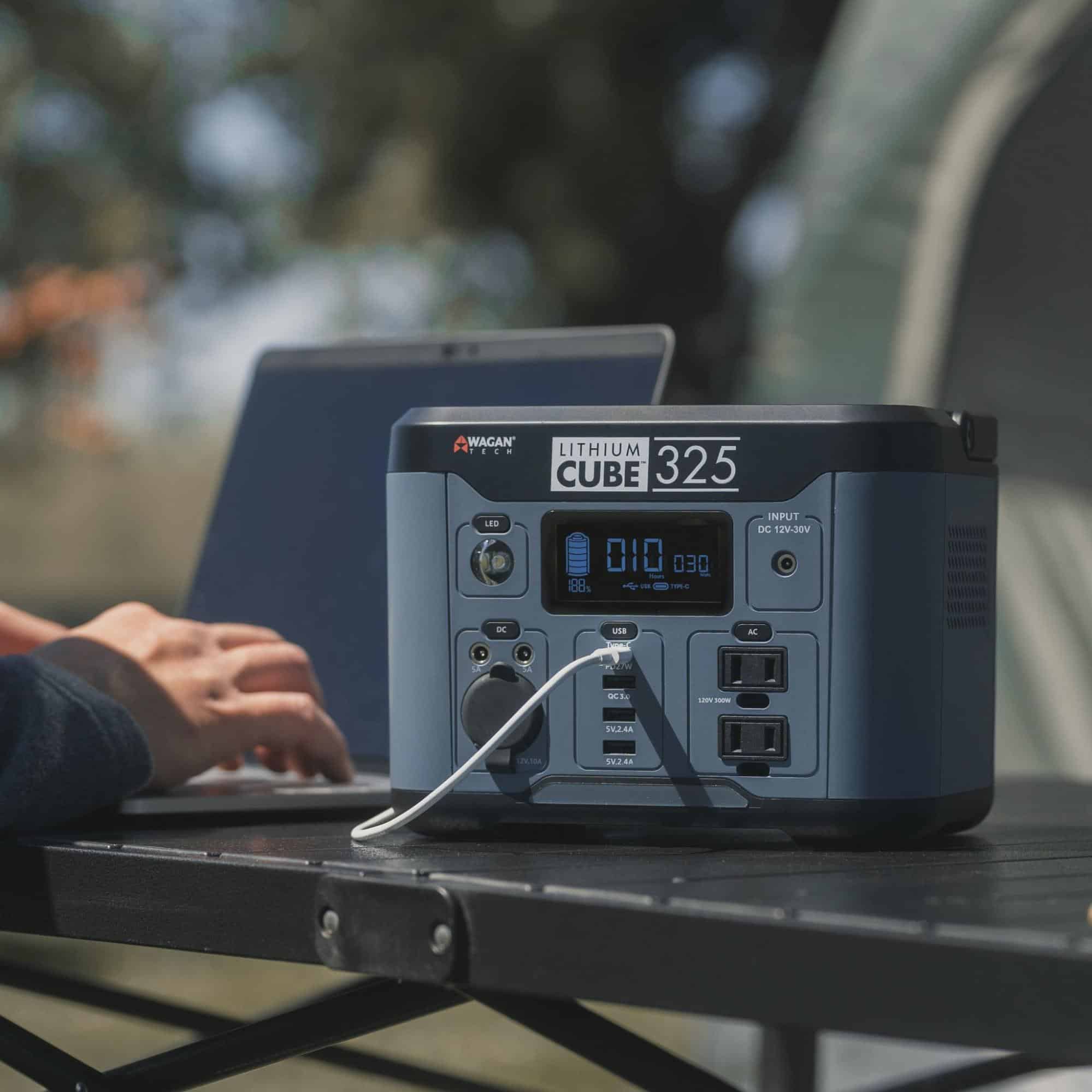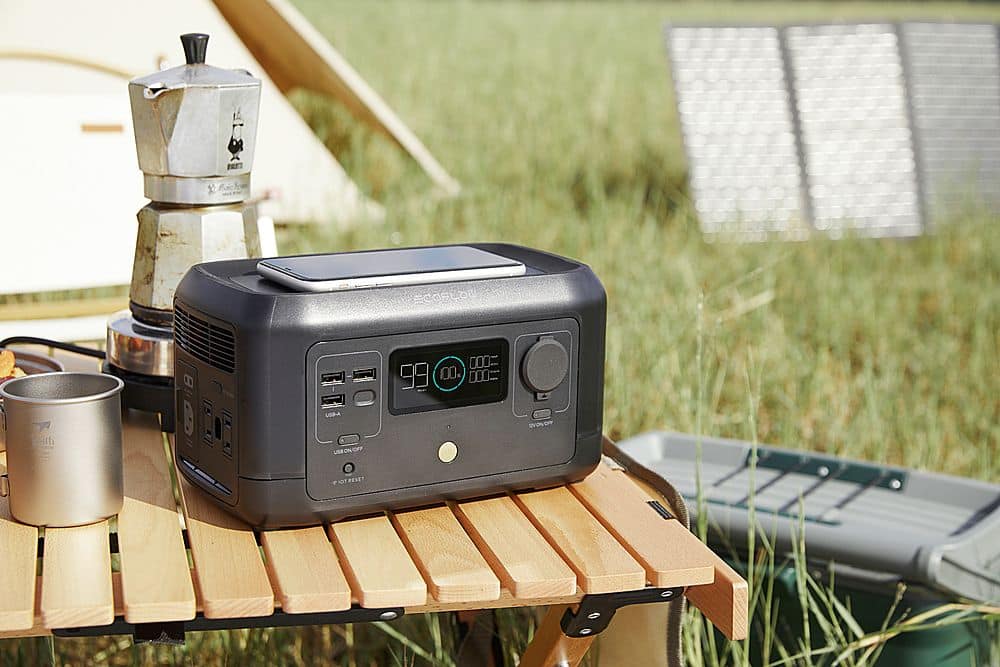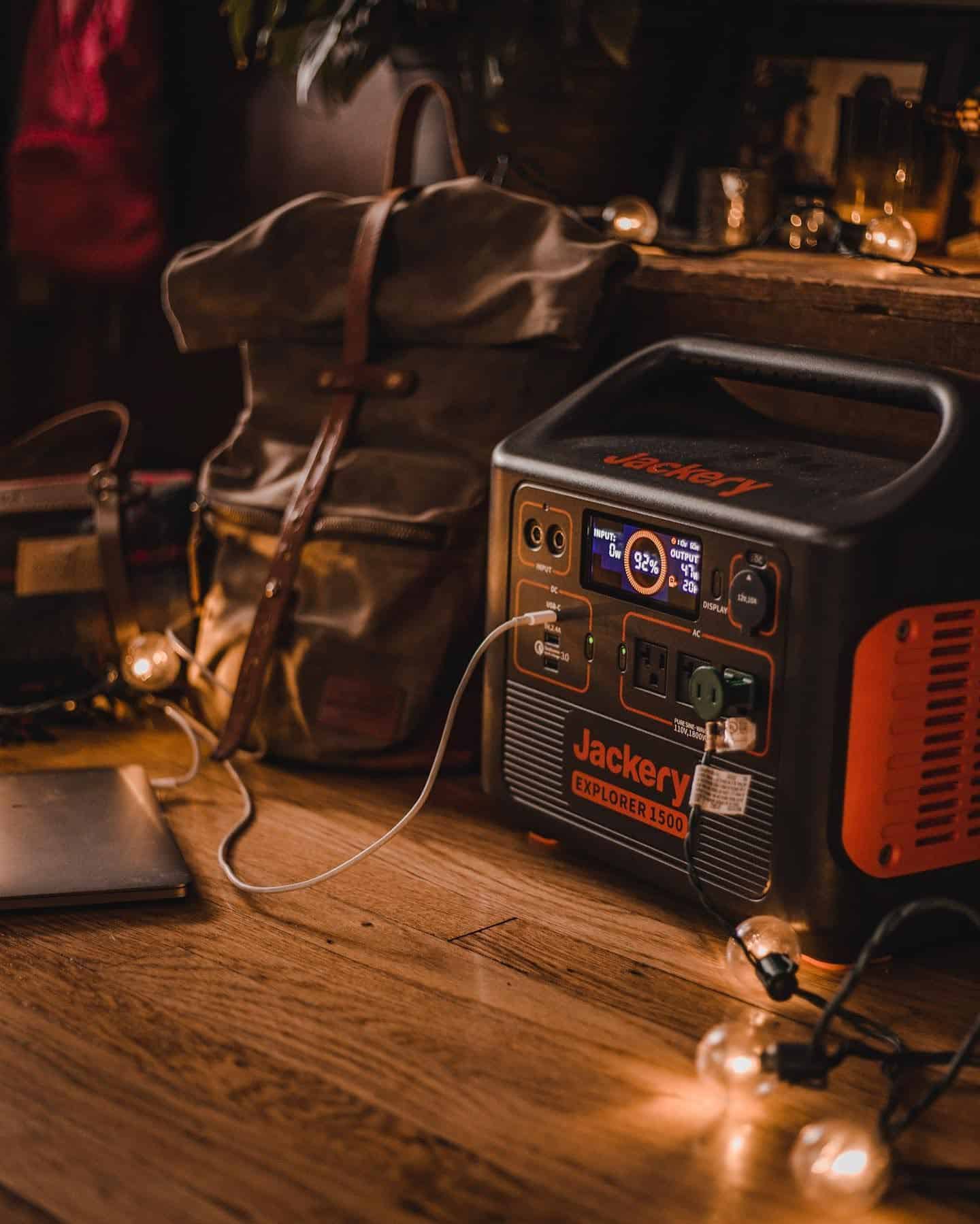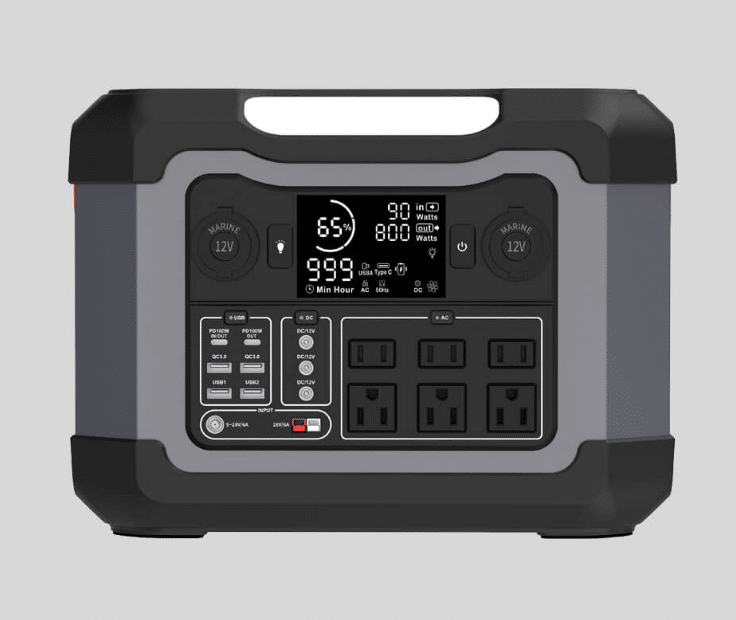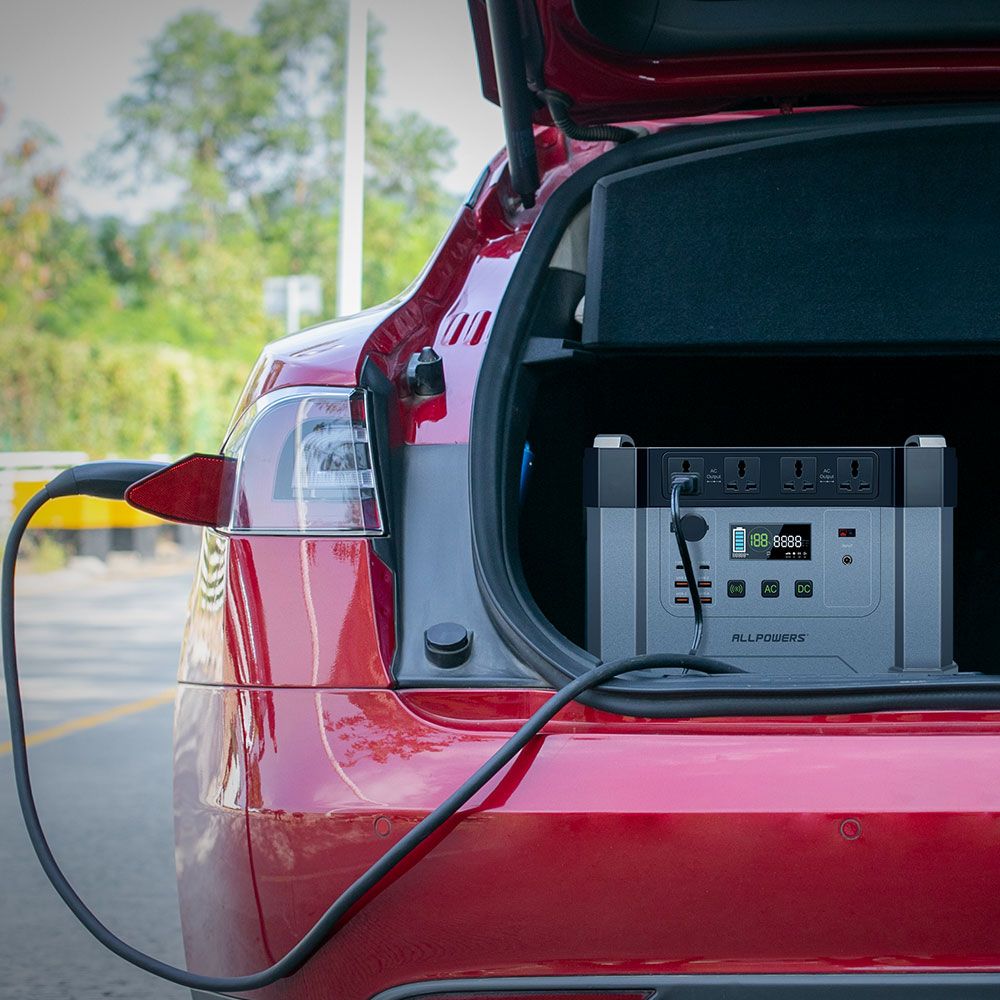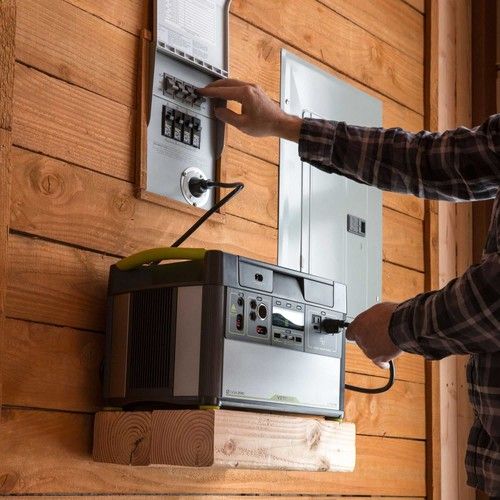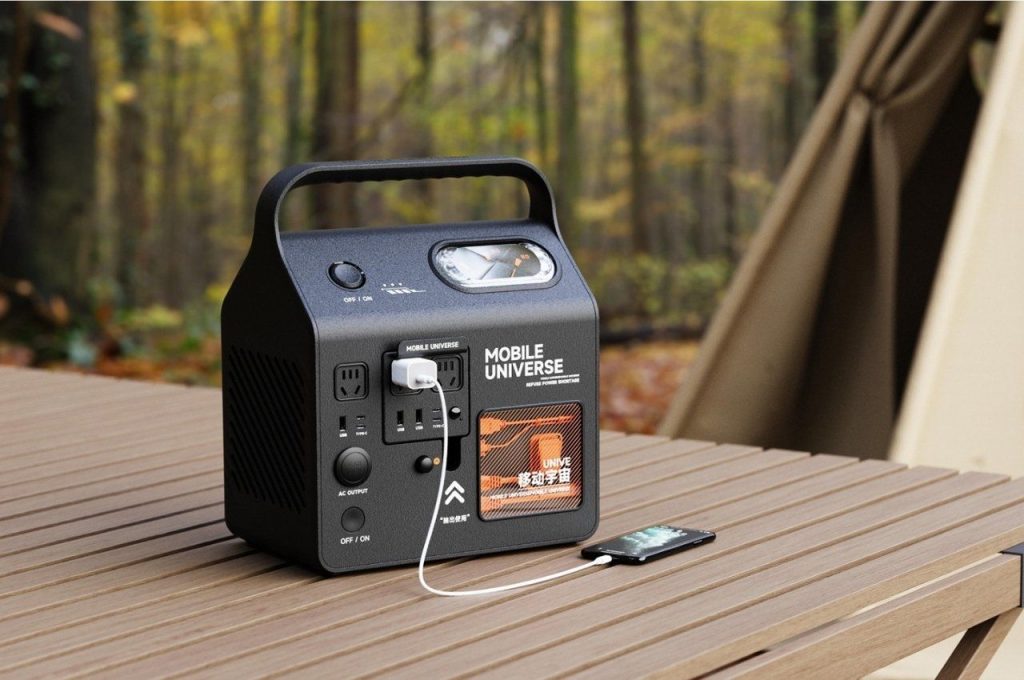
Image Source: Pinterest
If you’re planning a camping trip, one of the most important things to consider is how you’re going to keep your devices charged. From phones and cameras to portable speakers and lights, having access to power can make all the difference in your outdoor experience. That’s where portable batteries come in.
In this article, we’ll be discussing the best portable batteries for camping, including their features and specifications, so you can make an informed decision on which one to bring on your next adventure.
Our targeted customer group for this guide is anyone who loves to camp and wants to stay connected while enjoying nature. Whether you’re a seasoned camper or new to the scene, having a reliable source of power can help keep you connected and safe in the great outdoors.
Portable batteries for camping are designed to be lightweight, durable, and capable of holding a charge for an extended period. They allow you to charge your devices without needing to be near an electrical outlet, making them a versatile tool for any adventurer. With so many options on the market, it can be overwhelming to choose the right one for your needs. That’s why we’ve compiled a list of the best portable batteries for camping to help you make an informed decision.
II.Top 5 Hot-Selling Portable Battery for Camping on the Market
Overview of the top 5 products
- Anker 535
- Goal Zero Yeti 1400
- Jackery Explorer 240
- EcoFlow River 2 max
- Bluetti ac50s
#1 Anker 535
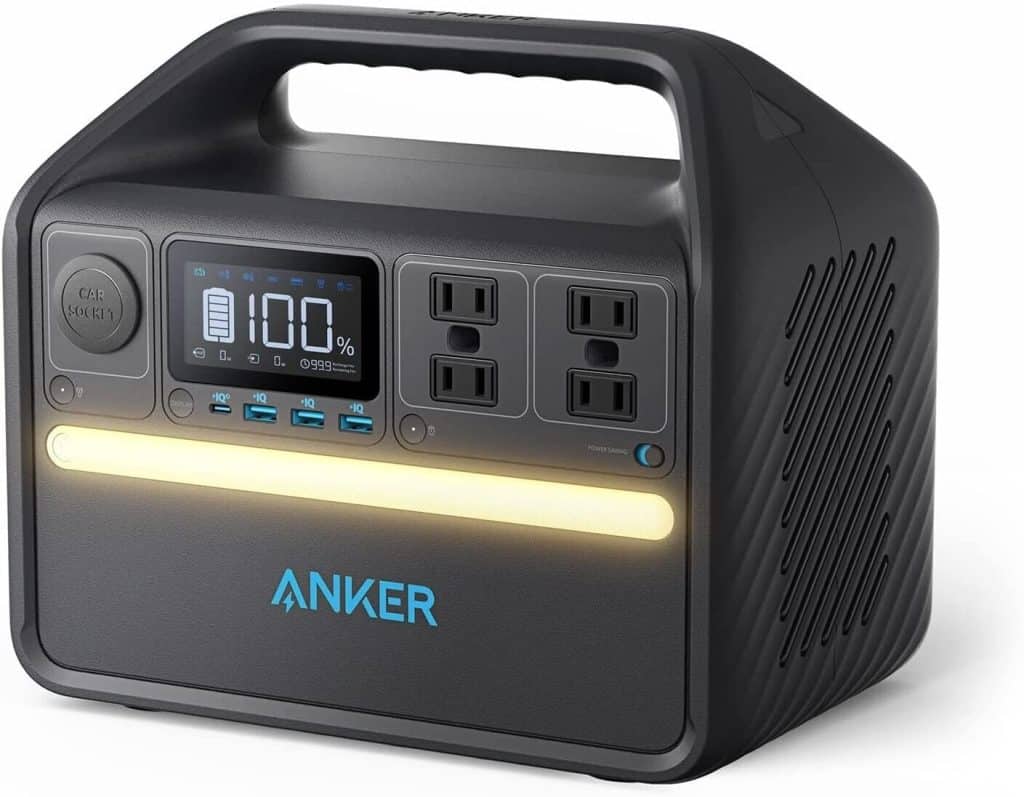
Image Source: Pinterest
Features and specifications of each product
Dimension:
- 11.4 x 7.5 x 7.2 inches
Features:
- 2 AC outlets
- 1 USB-C port
- 3 USB-A ports
- 1 car socket
Specification:
- AC Output: 2000W
- AC Output Voltage: 110V/120V
- AC Output Frequency: 60Hz
- Battery Capacity: 700Wh (51.8Ah @ 13.5V)
- Battery Type: Lithium-ion
- DC Input: 35V~150V/Max. 10A
- MPPT Solar Charge Controller: 35V~150V/Max. 10A
- Weight: 57.3 lbs
Color:
- Black
Pros and cons of each product
Pros:
- Compact and portable design
- Multiple charging options including USB-C and car socket
- Fast charging with PowerIQ technology
- Can charge small to medium devices like laptops, phones, and cameras
Cons:
- Low AC output power of 100W, may not be suitable for larger devices like refrigerators or power tools
- No solar charging option
- Expensive compared to similar products in the market
Comparison of the products
- Anker 555: higher battery capacity (85,000mAh), more AC outlets (3), higher AC output power (300W), and solar charging option. Price: $699.99
- EcoFlow River 600: lower battery capacity (288Wh), but higher AC output power (600W) and solar charging option. Price: $349.99
- Goal Zero Yeti 400: lower battery capacity (396Wh), but higher AC output power (300W) and solar charging option. Price: $449.95
Average Price Range: $490–$500
Product Link: https://us.anker.com/products/a1751?variant=41686355771542¤cy=USD&utm_medium=product_sync&utm_source=google&utm_content=sag_organic&utm_campaign=sag_organic
#2 Goal Zero Yeti 1400
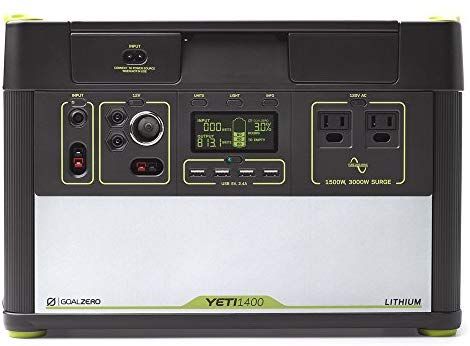
Image Source: Pinterest
Features and specifications of each product
Dimension:
- 10.1 x 15.3 x 10.4 in
Features:
- Wi-Fi connectivity
- MPPT charge controller
- LCD display
- multiple charging options
- replaceable lithium-ion battery
Specification:
- 1425Wh (132,000mAh) capacity
- 1500W pure sine wave inverter
- 2.4A USB ports
- 120W 12V ports
- 12V Power Pole port
- 300W Anderson Power Pole
- 120V AC outlets
- 10A or 20A charging options
weight of 43.7 lbs.
Color:
- Black
- Green
Pros and cons of each product
Pros:
- High capacity and power output
- Replaceable battery allows for longer lifespan and versatility
- Multiple charging options for various devices
- Wi-Fi connectivity and LCD display for easy monitoring
- Durable and rugged build quality
Cons:
- Heavy and not as portable as some other options
- Price is on the higher end
- Some users have reported issues with the Wi-Fi connectivity and LCD display
- Comparison of the products
- Goal Zero Yeti 1400: 1425Wh, 1500W pure sine wave inverter, Wi-Fi connectivity, replaceable battery, $1,899.95 on Goal Zero website
- Anker Powerhouse 200: 57600mAh, 200W AC output, 2 USB-A ports, 1 USB-C port, 1 DC port, 1 car port, 1 AC outlet, $229.99 on Anker website
- Jackery Explorer 1000: 1002Wh, 1000W pure sine wave inverter, 3 AC outlets, 2 USB-C ports, 2 USB-A ports, 1 car port, 1 DC port, $999.99 on Jackery website
Average Price Range: $1,800
Product Link: https://satellitephonestore.com/catalog/sale/details/goal-zero-yeti-1400-lithium-power-station-v2
Critic Review: https://docs.google.com/document/d/1j294ZWcbG-0EFah_2JrzjlhFtEjn2edRYk_hcHr-Bsg/edit
#3 Jackery Explorer 240
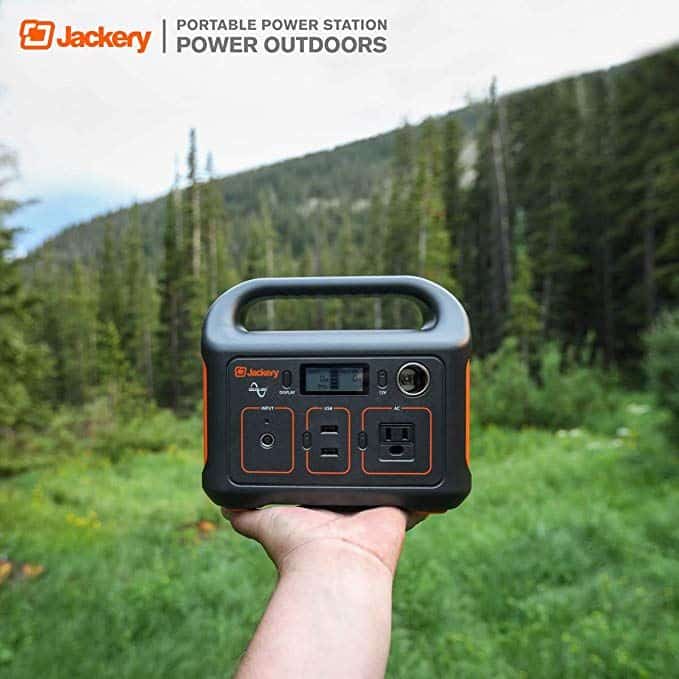
Image Source: Pinterest
Features and specifications of each product
Dimension:
- 9.05 x 5.24 x 7.87 inches
Features:
- 240Wh capacity, 6.6 lbs weight
- Multiple charging ports: AC, DC, USB-A, USB-C
- Pure sine wave inverter for stable power supply
- LCD screen with charge/discharge and battery life information
- Silent fan for temperature regulation
Specification:
- Battery capacity: 16.8Ah, 14.4V (equivalent to 240Wh)
- Input: DC 12V/24V, AC 50W (solar panel not included)
- Output: AC 110V, 200W (400W peak), DC 12V/10A, 2 x USB-A 5V/2.4A, 1 x USB-C 5V/3A
- Recharge time: 8 hours (AC), 7 hours (car), 9 hours (solar panel)
Color:
- Orange
- Gray
Pros and cons of each product
Pros:
- Compact and lightweight design
- Versatile charging options for different devices
- LCD screen with battery information is helpful
- Silent fan for temperature regulation
- Affordable price compared to other similar products
Cons:
- Only supports charging up to 200W, limiting its use for some appliances
- No built-in solar panel, need to purchase separately
- Cannot charge while using it, must stop using it to recharge
Comparison of the products
- Jackery Explorer 240: 240Wh, 6.6 lbs, $249.99 (on Jackery official website)
- Anker Powerhouse 200: 213Wh, 7.05 lbs, $229.99 (on Anker official website)
- Goal Zero Yeti 400: 400Wh, 29 lbs, $449.95 (on Goal Zero official website)
- EcoFlow River 370: 370Wh, 8.8 lbs, $549.00 (on EcoFlow official website)
Average Price Range: $200–$249
Product Link: https://www.jackery.com/products/explorer-240-portable-power-station?variant=19479246864471¤cy=USD&utm_medium=product_sync&utm_source=google&utm_content=sag_organic&utm_campaign=sag_organic
Critic Review: https://www.androidcentral.com/accessories/jackery-explorer-300-review
#4 EcoFlow River 2 max
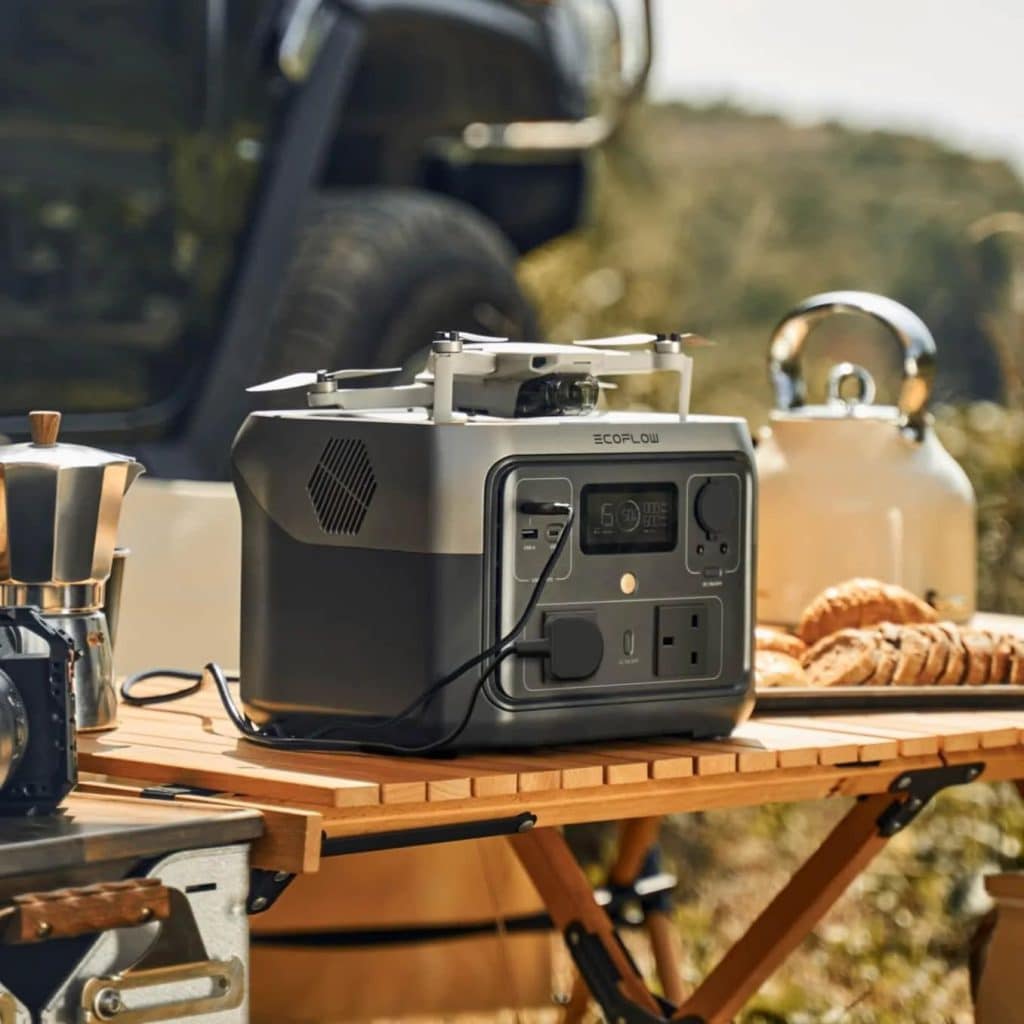
Image Source: Pinterest
Features and specifications of each product
Dimension:
- 11.3 x 7.1 x 9.3 inches
- Features:
- High-capacity lithium-ion battery
- Fast charging technology
- Multiple charging options
- Durable and water-resistant
- LCD display screen for monitoring
- Can power multiple devices simultaneously
Specification:
- Capacity: 288Wh
- Weight: 17.9 lbs
- AC output: 1200W
- DC output: 13.6V, 30A
- USB output: 2 x USB-A (5V, 2.4A) & 2 x USB-A (5V, 2.4A)
Color:
- Black
Pros and cons of each product
Pros:
- High-capacity battery
- Fast charging technology
- Multiple charging options
- Durable and water-resistant design
- Can power multiple devices simultaneously
Cons:
- Heavy compared to other portable power stations
- Pricey
- Comparison of the products
- Jackery Explorer 240: 240Wh, 6.6 lbs, 200W AC output, 2 x USB-A (5V, 2.4A) & 1 x DC (12V, 10A), lower price point
- Goal Zero Yeti 400: 400Wh, 29 lbs, 300W AC output, 2 x USB-A (5V, 2.4A) & 2 x DC (6mm, 12V, 10A), higher price point
- Bluetti AC50s: 500Wh, 13.6 lbs, 300W AC output, 2 x USB-A (5V, 3A) & 1 x USB-C (45W PD), higher price point
Average Price Range: $588–$640
Product Link: https://www.offgridtrek.com/products/ecoflow-river-2-max-portable-power-stationno-us-sales-tax-free-shipping
Critic Review: https://www.storagereview.com/review/ecoflow-river-2-max-review
#5 Bluetti AC50s
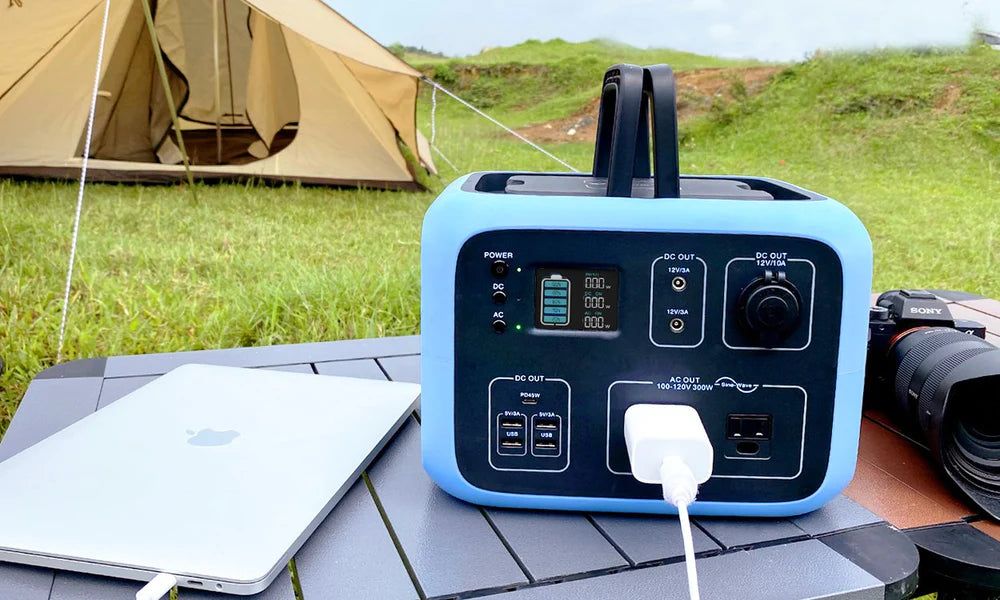
Image Source: Pinterest
- Features and specifications of each product
Dimension:
- 11.6 x 7.5 x 7.7 inches
Features:
- Large capacity: 500Wh (135Ah) Lithium battery with pure sine wave inverter.
- Multiple charging options: AC, car, solar or generator.
- Versatile outputs: 2 AC outlets, 4 DC ports, 1 USB-C PD port, 2 USB-A ports, and 1 cigarette lighter port.
- Easy-to-read display screen and user-friendly design.
- Advanced safety features to protect your devices.
Specification:
- Battery: Lithium-ion battery (135Ah @ 3.7V)
- AC output: 110V/300W (600W surge)
- DC output: 12V/10A (total), 2 x 12V/3A (total), 1 x 12V/10A (carport)
- USB output: 2 x USB-A (5V/3A), 1 x USB-C PD (60W)
- Charging time: 4-5 hours (AC), 4-5 hours (car), 4-5 hours (solar)
- Lifecycle: 2000+ cycles
- Operating temperature: 14-104°F
- Warranty: 24 months
Color:
- Gray
Pros and cons of each product
Pros:
- Large battery capacity
- Multiple charging options and versatile outputs
- User-friendly design and advanced safety features
- Easy-to-read display screen
- Long lifecycle and generous warranty
Cons:
- Slightly heavier than some competitors
- Higher price point compared to some options
- Comparison of the products
- Bluetti AC50s (500Wh, $499)
- Anker Powerhouse 400 (388Wh, $499)
- Goal Zero Yeti 500X (505Wh, $699)
- EcoFlow River 600 (288Wh, $349)
Average Price Range: $359–$380
Product Link: https://wellbots.com/products/bluetti-ac50s-portable-power-station-1-pv120-solar-panel?variant=40012012126256&dfw_tracker=14110-40012012126256&srsltid=AfAwrE5aAIHTm_sCPY67k7ajMQMDEM4Uzb2Z9nVd4027QBiwELtnPAMW6C8
Critic Review: https://www.zdnet.com/product/bluetti-ac50s-portable-power-station/
III. How to choose the best portable battery for camping
Power output
- The power output of the portable battery is important to consider as it determines how many devices can be charged simultaneously. This feature is crucial for families or groups of campers who need to charge multiple devices.
Battery capacity
- It is essential to consider the battery capacity as it determines how long the battery will last on a single charge. This feature is important for campers who plan to be off-grid for an extended period.
Input and output ports
- It is important to consider the number and type of input and output ports available in the portable battery. This feature is crucial for campers who plan to charge various devices or use multiple charging methods.
Weight and portability
- The weight and portability of the portable battery are critical as they determine how easy it is to carry the battery during camping trips. This feature is important for campers who plan to hike or travel long distances.
Durability and build quality
- It is essential to consider the durability and build quality of the portable battery. This feature is crucial for campers who plan to use the battery in rugged outdoor environments.
Additional features
- Additional features such as built-in flashlights, solar panels, and wireless charging capabilities can be beneficial for campers. However, it is important to weigh the benefits against the cost when considering these additional features.
IV. 5 Best portable battery brands for camping 2023
Best Overall : Sunly Portable Power Station
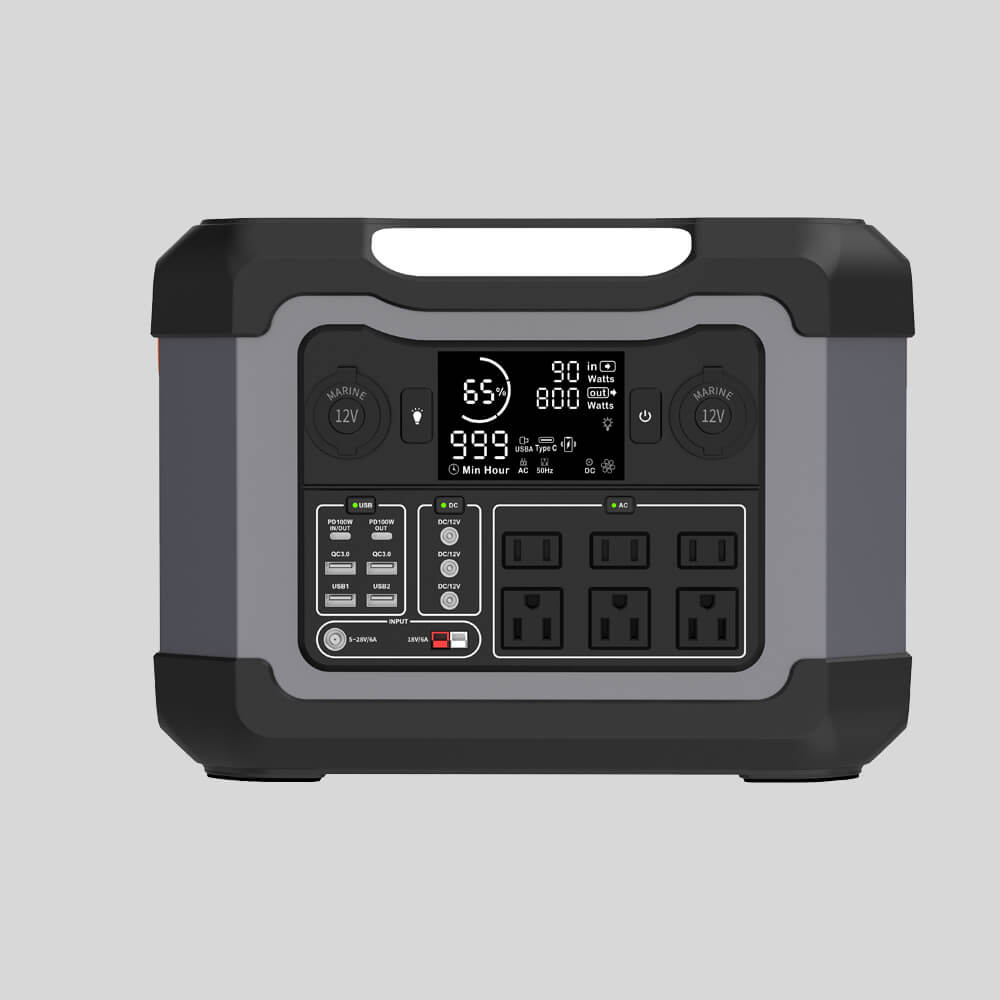
When it comes to choosing a portable battery for camping, it’s important to consider various factors, such as capacity, weight, durability, and features. Sunly Portable Battery for Camping is a great option to consider, offering customization capability, low MOQ, and premium quality as it is a factory.
http://sunlypower.com/
- Customization capability
Sunly Portable Battery for Camping offers customization capability, allowing customers to choose from a wide range of specifications, including capacity, output voltage, and input options. This feature ensures that customers can get a battery that meets their specific needs and requirements. - Low MOQ
Sunly Portable Battery for Camping has a low minimum order quantity (MOQ), making it easier for individuals and small businesses to purchase their product without committing to a large number of units. - Bring premium quality since it is a factory
Sunly Portable Battery for Camping is manufactured in a factory, ensuring that the product is of premium quality. This also means that the company has more control over the manufacturing process, resulting in a better end product. - Factory pricing
Sunly Portable Battery for Camping is manufactured in a factory, ensuring that the product is of premium quality. This also means that the company has more control over the manufacturing process, resulting in a better end product.
Featured Products
Factory-Direct Portable Power Stations in Supplies
Why we pick it:
- Sunly Portable Battery for Camping stands out for its customization capability, low MOQ, premium quality, and factory pricing.
Capacity
- The Sunly Portable Battery for Camping has a capacity of 300Wh, making it an excellent choice for camping trips, outdoor activities, and emergency backup power.
Content angle you can refer:
The article can focus on the importance of having a reliable power source when camping and how the Sunly Portable Battery for Camping can meet those needs. Additionally, it can highlight the benefits of customization and low MOQ for those who want a tailored solution.
Overview of other products worth mentioning:
- Jackery Explorer 500
- EcoFlow River 600
- Goal Zero Yeti 500X.
Features and specifications of each product:
- Jackery Explorer 500: 518Wh capacity, 3 AC outlets, 2 USB-C ports, 2 USB-A ports, 1 DC car port, weighs 13.32lbs.
- EcoFlow River 600: 576Wh capacity, 3 AC outlets, 2 USB-C ports, 2 USB-A ports, 2 DC car ports, weighs 15.9lbs.
- Goal Zero Yeti 500X: 505Wh capacity, 2 AC outlets, 4 USB-A ports, 2 USB-C ports, 12V car port, weighs 12.9lbs.
Pros and cons of each product
- Jackery Explorer 500: Pros- large capacity, multiple outlets, lightweight. Cons- slightly more expensive than other models, can be noisy.
- EcoFlow River 600: Pros- large capacity, multiple outlets, fast charging. Cons- heavier than other models, more expensive.
- Goal Zero Yeti 500X: Pros- lightweight, compact, more affordable than other models. Cons- smaller capacity, fewer outlets.
Comparison of the products
Most Versatile : Goal Zero Yeti 1400
Goal Zero Yeti 1400 is a powerful and versatile portable battery, suitable for camping, tailgating, and emergency backup power. With a maximum output of 1500W, it can power almost anything, from laptops to refrigerators. It also has a variety of input and output ports, making it compatible with a range of devices.
Most Affordable : Jackery Explorer 240
Jackery Explorer 240 is a budget-friendly option for those who want a portable battery for camping. It has a capacity of 240Wh and can power small appliances and electronic devices. It also has multiple input and output ports and can be recharged via solar panels or an AC adapter.
Long Lasting : EcoFlow River 2 max
EcoFlow River 2 Max has a massive 576Wh capacity, making it a long-lasting option for camping trips. It has multiple input and output ports, including USB-C and DC, and can power appliances up to 1800W. It also has a fast recharge time of 1.6 hours.
Most Portable: Bluetti ac50s
Bluetti AC50S is a compact and lightweight portable battery, weighing only 13.6 pounds. It has a capacity of 500Wh and can power small appliances, smartphones, and laptops. It has multiple input and output ports, including AC, DC, USB-C, and USB-A, and can be recharged via solar panels or an AC adapter.
V. How to use a portable battery for camping
Step 1: Setting up the portable power station
- Choose a level, stable surface to place your portable power station
- Make sure the battery is fully charged or has enough charge to meet your needs
- Turn on the power station using the power button or switch
Step 2: Charging the portable power station
- Connect the power station to a solar panel or AC outlet using the provided cables
- Wait for the battery to charge fully, which may take several hours or even days depending on the size of the battery and the charging method
Step 3: Connecting devices to the portable power station
- Identify the appropriate ports for your devices (such as USB, AC, or DC)
- Connect your devices to the power station using the appropriate cables or adapters
- Turn on your devices and use them as you normally would, keeping an eye on the battery level of the power station and recharging it as needed.
VI. Conclusion
In conclusion, portable batteries for camping are essential for powering your devices while on the go. They provide convenience, flexibility, and safety by eliminating the need for traditional power sources. Our product recommendations are carefully curated to suit your needs and budget, providing a range of options from affordable to high-end models. By choosing the right portable battery for your camping needs, you can enjoy the great outdoors while staying connected and powered up. We hope our recommendations have been helpful in guiding you towards the best portable battery for your next camping adventure.

